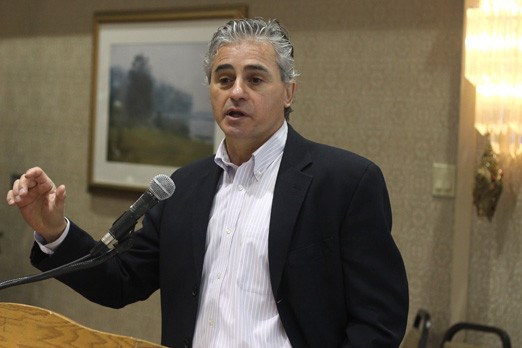THUNDER BAY -- While it’s going to take time, the province is confident that a plan to make the Thunder Bay Expressway safer will move forward.
On Tuesday the province announced a preliminary design study and environmental assessment for the 13 kilometre stretch of highway. That plan will include what to do about the highway’s six sets of traffic lights from Arthur Street to Balsam Street, the bane of Thunder Bay drivers since the bypass was built.
“Once that work is completed we’ll be in a position to move forward with the actual work,” MPP Bill Mauro (Lib., Thunder Bay-Atikokan) said.
The study could take up to two years and start as early as June. There was a similar study done 20 years ago, but Mauro said the government of the day never followed through.
“Sufficed to say they decided that they were not moving forward with any of the work that we’re talking about doing,” he said. “Unfortunately a lot of that preliminary design work is dated it wouldn’t be able to just be pulled off the shelf and be used to bring these projects forward.”
Because the study is going to be a bidding competition for consultants, Mauro didn’t know what the cost of the study would be.
Ministry of Transportation engineering manager Iain Galloway said the study will examine the possibilities for removing the traffic lights from the intersections.
“You will see some type of structure whether it’s a flyover or an interchange, cloverleaf or a diamond, those types of things,” he said.
It will also look at dividing the highway. That means determining property along the road.
MPP Michael Gravelle (Lib., Thunder Bay-Superior North) said he and Mauro are excited that the plan could bring big changes to the highway. It’s important that safety be improved as a number of tragic collisions have happened over the years that could have been avoided.
“This preliminary design that will be done and the environmental assessment will give us a lot of answers,” he said.
There were several collisions on that stretch of highway over the past several days. Mauro said he’s not sure whether the study could look at interim safety measures but the MTO could have some options.
“Perhaps a simple solution would be some sort of a concrete median that might be created, I think they’ve considered that in the past and there may be reasons why they have not gone forward with it,” he said.
Galloway said once the preliminary study is done, designs typically take up to three years to complete.
